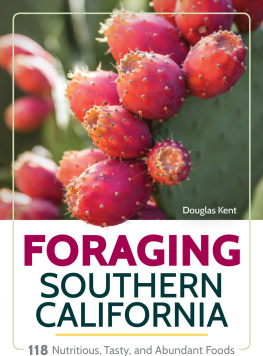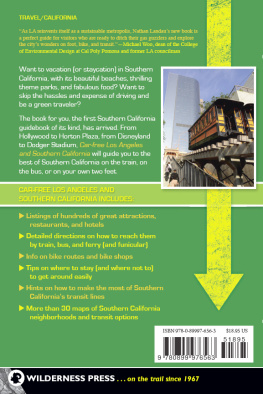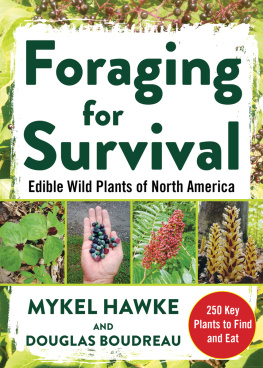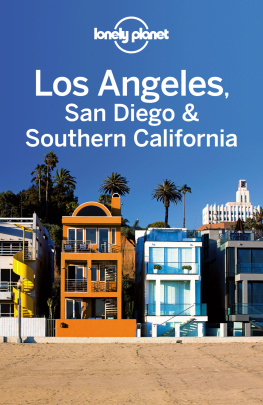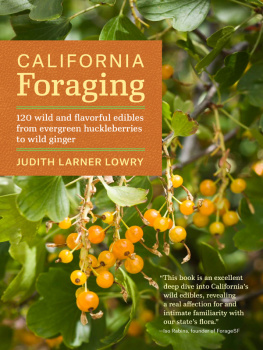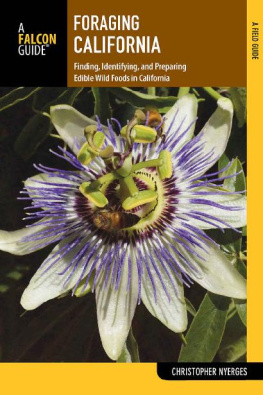Douglas Kent - Foraging Southern California
Here you can read online Douglas Kent - Foraging Southern California full text of the book (entire story) in english for free. Download pdf and epub, get meaning, cover and reviews about this ebook. year: 2019, publisher: Adventure Publications, genre: Children. Description of the work, (preface) as well as reviews are available. Best literature library LitArk.com created for fans of good reading and offers a wide selection of genres:
Romance novel
Science fiction
Adventure
Detective
Science
History
Home and family
Prose
Art
Politics
Computer
Non-fiction
Religion
Business
Children
Humor
Choose a favorite category and find really read worthwhile books. Enjoy immersion in the world of imagination, feel the emotions of the characters or learn something new for yourself, make an fascinating discovery.
- Book:Foraging Southern California
- Author:
- Publisher:Adventure Publications
- Genre:
- Year:2019
- Rating:3 / 5
- Favourites:Add to favourites
- Your mark:
- 60
- 1
- 2
- 3
- 4
- 5
Foraging Southern California: summary, description and annotation
We offer to read an annotation, description, summary or preface (depends on what the author of the book "Foraging Southern California" wrote himself). If you haven't found the necessary information about the book — write in the comments, we will try to find it.
Foraging Southern California — read online for free the complete book (whole text) full work
Below is the text of the book, divided by pages. System saving the place of the last page read, allows you to conveniently read the book "Foraging Southern California" online for free, without having to search again every time where you left off. Put a bookmark, and you can go to the page where you finished reading at any time.
Font size:
Interval:
Bookmark:

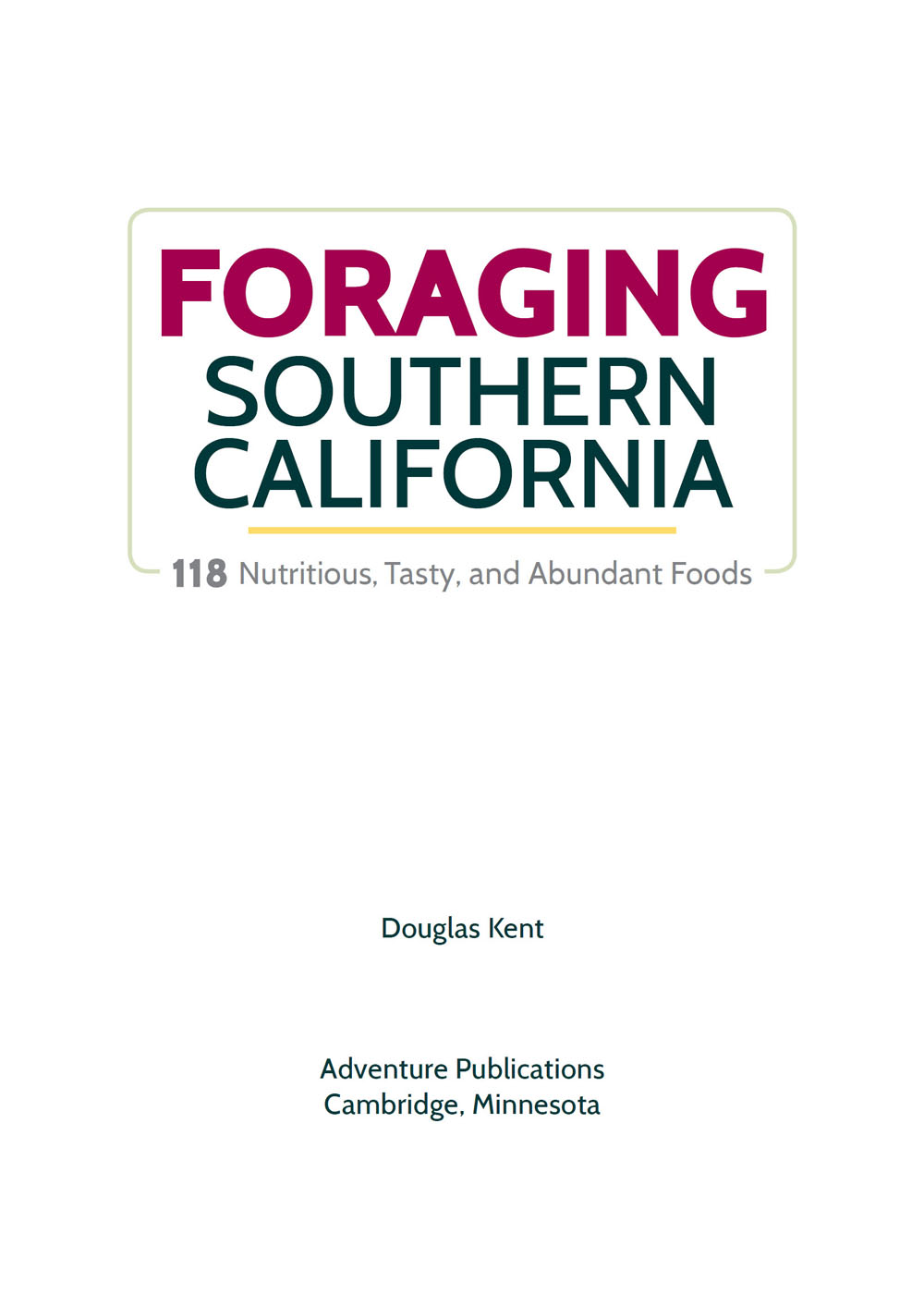
This book is dedicated to a fantastic clan of foragers: the Dunne family (Debbie, Peter, Shannon, Connor, Declan, and Kieran) and the faculty, staff, and students at the Lyle Center for Regenerative Studies, California State Polytechnic University, Pomona.
Cover and book design by Jonathan Norberg
Edited by Brett Ortler
Cover images: Prickly Pear Fruit, front cover by Lynda Disher/shutterstock.com; Wild Strawberry, back cover by Sarah2/shutterstock.com
Photo credits:
Photos identified by page in descending positions a, b, c, d, e, f
All photos copyright of their respective photographers.
Alex Bairstow:
10 9 8 7 6 5 4 3 2 1
Foraging Southern California: 118 Nutritious, Tasty and Abundant Foods
Copyright 2020 by Douglas Kent
Published by Adventure Publications
An imprint of AdventureKEEN
330 Garfield Street South
Cambridge, Minnesota 55008
(800) 678-7006
www.adventurepublications.net
All rights reserved
Printed in China
ISBN 978-1-59193-915-3 (pbk.); ISBN 978-1-59193-916-0 (ebook)
Photos identified by page in descending positions a, b, c, d, e, f
Used under license from Shutterstock.com:
A Cotton Photo:

DANDELION
This book started out as a love affair, morphed into a tragedy, and eventually (and luckily), evolved into a hopeful story.
Foraging is fantastic fun. It is a whimsical delight best shared with others. And that is the genesis of this bookoutdoorsy fun with family and friends. The story turned tragic when I realized that many of the plants I would have harvested and recommended just a decade ago should no longer be foraged. Like many other native plants, their numbers are dwindling, and they are losing their competitive advantage amid a changing and challenging environment.
Californias natural environment is in peril. While we lead the nation in enterprise and economy, we also lead in the number of extinct, endangered, and threatened aquatic and terrestrial plants and animals.
But there may be a glimmer of hope: Maybe we can graze ourselves to a better future. We just need to rely more heavily on the nature that we createwe need to eat the weeds. By foraging with this guide, you might be able to help.
Eating the weeds isnt just good for our regions ecological health, it is absolutely great for your personal health. Many of the species are superfoods with an impressive nutritional content, boasting many health benefits.
This book lists 118 species in Southern California. A majority of the plants and animals in this book are non-native and thrive because of human influence. Consuming these species might reduce some of the pressure on native species. While there are native plants in this guide, all are widespread and cosmopolitan (as easily found in the wild as in a residential landscape).
Foraging Southern California has been designed to engage and inspire first-time and intermediate foragers. It does this by:
- Organizing the species by harvestable quality. You shouldnt have to read an entire book for a salad. A goal of this book is to quickly lead you to what you need to know.
- Packing an abundance of goodness into this guide. Berries and seeds, flowers, and roots are some of the edibles included, as well as kelp, crawfish, and even snails (they are delicious).
- Providing multiple pathways to identification. We want to make sure you have success. Foraging Southern California provides detailed descriptions, full-page photographs, and comparisons of look-alike species (poisonous or not).
- Lastlyand importantlyproviding all the information on poisonous and look-alike species. This guide goes to great lengths to ensure your personal safety.
So take a walk, jump on a bike, or head to the beach; any activity provides an opportunity to nourish yourself with the natural bounty of Southern California. Foraging for these species can improve your health, change your outlook, and even help our environment.
NOTES
Southern California is defined as everything south and east of Santa Barbara. This includes the Channel Islands, the southern part of the Sierra Nevada Mountains, and the Mojave and Sonoran Deserts. Practically speaking, a majority of the species in this guide can be found throughout California. This book focuses on plants that follow people, and humans are everywhere.
Additionally, only four of Southern Californias eight islands are included. The other four are either too remote or have restricted access. The islands included are Catalina, Santa Cruz, Santa Rosa, and San Miguel. The islands not listed are San Clemente, Santa Barbara, San Nicolas, and Anacapa.
The maps were produced via a great deal of personal experience and by cross-referencing with two primary sources: Calflora, a nonprofit that catalogs and maps Californias native and invasive plants (calflora.org), and Sunset Western Gardening Book (Oxmoor House, 2012). With that said, the range maps are necessarily approximate, as the data sources for some species range from sketchy to nonexistent at times.
Foraging is hardly a dangerous endeavor, but that does not mean it is not without risk. Every forager faces three distinct types of risk: digestive, physical, and legal.
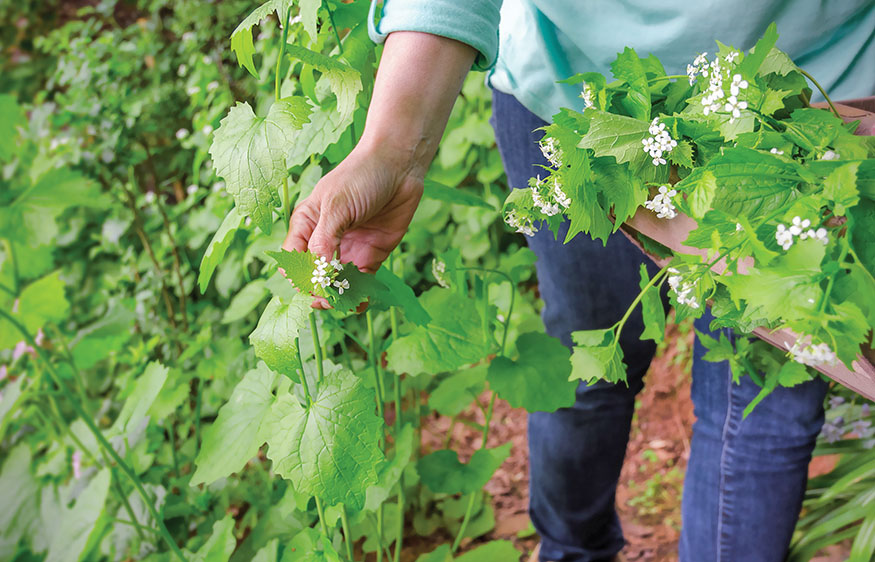
Foraging involves eating wild foods from unfamiliar lands. Naturally, there are risks with such an enterprise. Below are six risks you face when eating foraged food.
MISIDENTIFICATION: While there are far more edible plants than not, this book goes to great lengths to help you identify those that are edible and avoid those that are toxic or inedible, including a chapter dedicated to Southern Californias most poisonous plants. Every foraging recommendation features a thorough description of the plants physical attributes, and every recommendation also includes common look-alikesand how to tell them apart. Only consume a plant if youre certain youve identified it correctly. When in doubt, throw it out.
PATHOGENS: Digesting a pathogen is the greatest threat to a foragers health. Below are steps to reduce this hazard.
Look for Signs: Materials that are discolored; misshapen; or have a rancid, bitter, or unpleasant smell are warning signs not to forage. Trust your sense of smell and your gut instinct.
Be Aware of Wildlife: Foraging around livestock, areas with a lot of wildlife (such as wetlands), or urban areas with dogs increases the risk of disease. Always wash and cook your harvest if picked from environments like these.
Avoid the Dirt: Pathogens love soil, and the closer you harvest to it, the more risk you have. If there is a choice between a specimen thats low to the ground or one thats high up, choose the one thats higher up.
Wash Your Harvest: Always wash your haul in water that is much warmer than the harvest. The positive temperature difference creates a pressure differential that should help pull pathogens and toxins out, instead of sucking them in.
Font size:
Interval:
Bookmark:
Similar books «Foraging Southern California»
Look at similar books to Foraging Southern California. We have selected literature similar in name and meaning in the hope of providing readers with more options to find new, interesting, not yet read works.
Discussion, reviews of the book Foraging Southern California and just readers' own opinions. Leave your comments, write what you think about the work, its meaning or the main characters. Specify what exactly you liked and what you didn't like, and why you think so.

